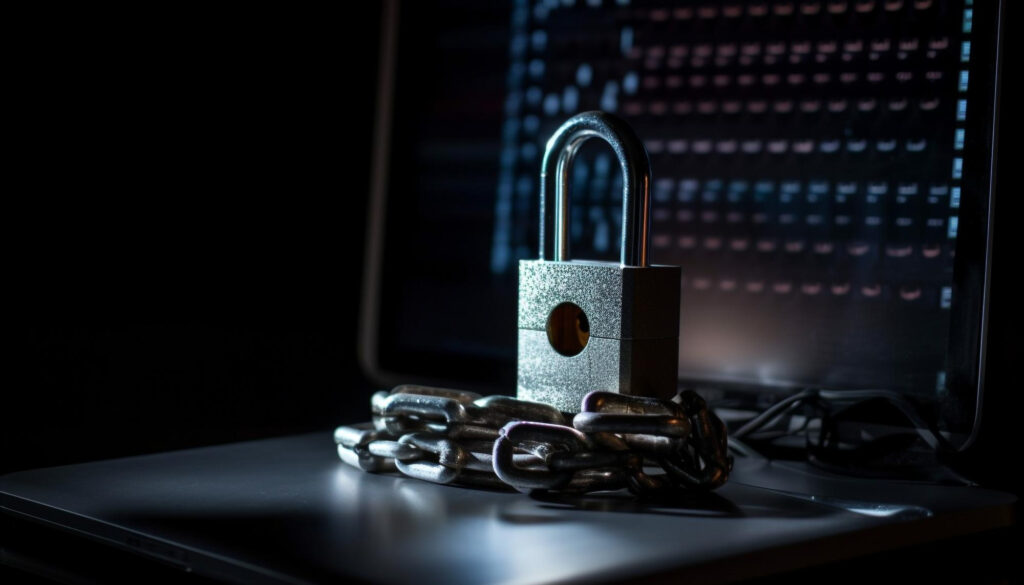In our interconnected world, where we share, store, and access information online, cybersecurity has become more crucial than ever. Whether you’re a casual internet user, a small business owner, or part of a larger organization, keeping your data safe is paramount. In this article, we’ll provide a simple guide to cybersecurity, offering practical tips to help you fortify your digital fortress and protect your valuable data.

-
Use Strong, Unique Passwords:
The foundation of good cybersecurity starts with strong and unique passwords. Avoid using easily guessable passwords like “password123” or common words. Create complex passwords that include a mix of uppercase and lowercase letters, numbers, and special characters. Additionally, ensure that you use different passwords for each of your accounts. If remembering multiple passwords is challenging, consider using a reputable password manager to securely store and manage your login credentials.
-
Enable Multi-Factor Authentication (MFA):
Multi-factor authentication adds an extra layer of security by requiring more than just a password for access. Typically, this involves receiving a code on your mobile device or email that you must enter along with your password. Enabling MFA significantly enhances the security of your accounts, making it more difficult for unauthorized users to gain access, even if they have your password.
-
Keep Software and Operating Systems Updated:
Regularly updating your software and operating systems is a simple yet effective way to enhance cybersecurity. Software updates often include security patches that address vulnerabilities identified by developers. Set your devices and applications to automatically install updates when available, or regularly check for updates and install them promptly.
-
Beware of Phishing Attempts:
Phishing is a common tactic used by cybercriminals to trick individuals into revealing sensitive information. Be cautious of unsolicited emails, messages, or pop-ups asking for personal or financial details. Avoid clicking on suspicious links, and verify the legitimacy of communication, especially if it prompts you to provide login credentials or financial information. When in doubt, contact the supposed sender through a trusted means to confirm the request’s authenticity.
-
Secure Your Home Network:
If you’re working or accessing the internet from home, securing your home network is vital. Set a strong and unique password for your Wi-Fi network, use WPA3 encryption if available, and change the default login credentials for your router. Regularly check for firmware updates for your router and apply them to patch any security vulnerabilities.
-
Backup Your Data Regularly:
Data loss can occur due to various reasons, including cyber attacks, hardware failures, or accidental deletions. Regularly backup your important data to an external hard drive, cloud storage, or both. This ensures that even if your primary data is compromised, you have a recent copy that can be restored. Many operating systems and cloud services offer automatic backup options that you can enable for added convenience.
-
Use Antivirus and Anti-Malware Software:
Antivirus and anti-malware software act as your digital guardians, detecting and removing malicious software from your devices. Install reputable security software on your computer and other devices, and keep it updated. Regularly run scans to check for potential threats, and be cautious when downloading files or clicking on links from unknown sources.
-
Secure Your Mobile Devices:
Smartphones and tablets are as susceptible to cyber threats as computers. Keep your mobile devices secure by enabling passcodes or biometric authentication, such as fingerprint or facial recognition. Install security apps that offer features like remote tracking, data wiping, and malware detection. Only download apps from official app stores to reduce the risk of downloading malicious software.
-
Educate Yourself and Stay Informed:
Knowledge is a powerful tool in the realm of cybersecurity. Stay informed about the latest cybersecurity threats and best practices by reading reputable sources, following cybersecurity blogs, and attending relevant webinars or workshops. Being aware of common tactics used by cybercriminals can help you recognize potential threats and take appropriate precautions.
-
Secure Your Social Media Accounts:
Social media accounts are valuable targets for cybercriminals. Review and adjust your privacy settings on social media platforms to control who can see your personal information. Be cautious about sharing sensitive details online, and be aware of social engineering tactics where attackers may try to manipulate you into revealing information.
-
Regularly Review Financial Statements:
Keep a close eye on your financial statements, including bank and credit card statements. Regularly review transactions to identify any unauthorized or suspicious activities. If you notice anything unusual, contact your financial institution immediately. Many banks offer notifications for certain types of transactions, providing an additional layer of security.
-
Secure Your Physical Devices:
Physical security is often overlooked in the digital realm. Ensure that your devices are physically secure by using locks, cables, or other deterrents to prevent theft. Keep your devices in a secure location when not in use, especially in public places, to reduce the risk of unauthorized access.
Conclusion:
In a world where our lives are increasingly digital, implementing simple cybersecurity practices is a proactive and essential step in safeguarding your data. Whether you’re protecting personal information, securing your home network, or ensuring the integrity of your online accounts, these practical tips can help you build a strong defense against cyber threats. By incorporating these measures into your digital routine, you can navigate the digital landscape with confidence, knowing that you’ve taken important steps to keep your data safe.